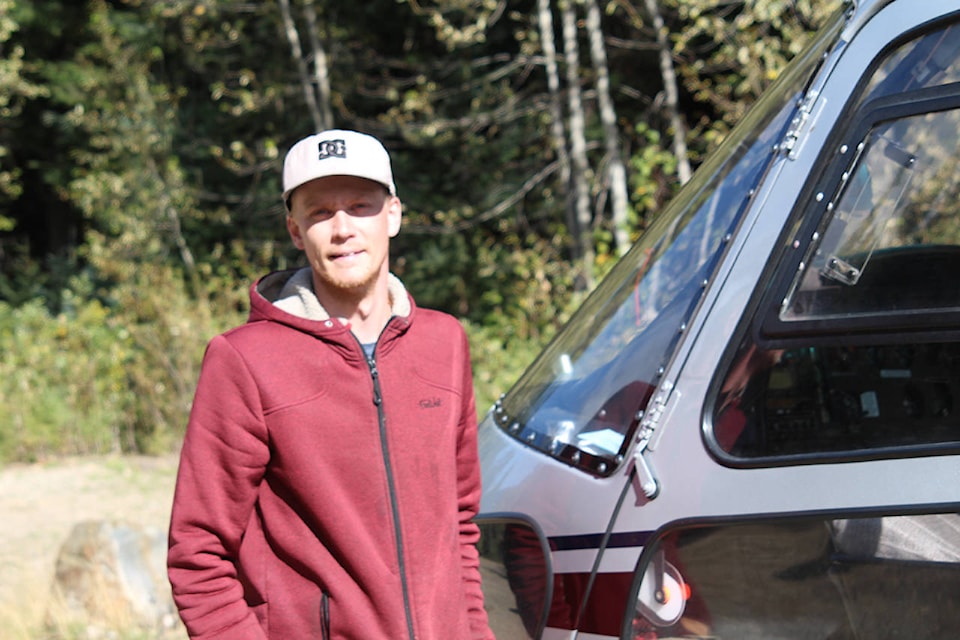Tim Collins/News staff
Sean Elliot is one of the scores of helicopter pilots who were engaged in fighting the wildfires in the Revelstoke area over the past several months, and to see his easy going attitude and confidence, it would be reasonable to assume that it’s a job he has thouroughly enjoyed.
“I do love flying. It’s what I always wanted to do and to be involved in fighting these fires has been something that gives me a level of pride as well. We did some good work out there,” said Elliott.
But the work is not without it’s risks.
- In August of 2003 the pilot of a fire fighting helicopter was killed 80 kilometres east of 100 Mile House when his Bell 205 chopper went down.
- In August of 2009 another pilot lost his life in southwester B.C. while fighting a wildfire.
- In 2015 a pilot was hospitalized following a crash while fighting fires in the B.C. interior.
- Another, non-life-threatening, crash in 2017 sent a pilot to hospital after a crash in the Chilcotin area.
“I guess there’s always risks. This terain can be very challenging as it gives you variable winds…you go through one drainage and the wind is going one way and you come out of there and it’s going th opposite way,” explained Elliott.
“And then there’s the fact that power is a factor. At high altitude you lose power and sometimes you get updrafts from the heat of the fires that pushes you up pretty suddenly. It’s 100 per cent more challenging than other conditions.”
Elliot went on to explain that the smoke frrm wildfires can obstruct vision and the heat can be tremendous.
“Sometimes we’ve had to pull up a little. We have the doors off and can really feel the heat, and you have to go up so you don’t melt your windshield. It’s pretty intimidating,” he said, smiling.
Elliot actually works, not for Parks Canada or the B.C. Wildfire service, but for Mustang Helicopters, who were, this year, contracted to do fire fighting flights for Parks Canada.
He’s been flying missions to dump water from a bucket suspended under his helicopter beginning in early May, right up to the end of September. He chuckled when asked how many flights he’d made in that period, and finally admitted he’d lost count.
“Using helicopters is really effective since we can fill the buckets in as little as 8 inches of water (although the rig under Elliott’s aircraft required three to four feet of water). We can react to high priority objectives where we can be more precise than skimmer planes. We can lower that bucket down through the trees and hit the spot that they need hit,” said Elliot.
It’s hard work, and not without risk, but when asked if he’d do it all over again next year, Elliott smiled and nodded.
“For sure,” he said.
